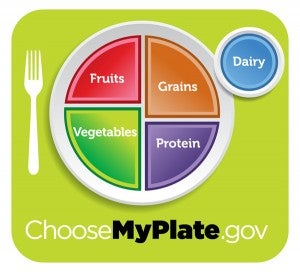Get your plate in shape this month
Published 10:10 am Friday, March 9, 2012
Column: Amy Pleimling, Dietitian Speaks
By now, most Americans have seen the new food guidance system released by the U.S. Department of Agriculture in summer 2011, MyPlate.
It is a practical tool designed to make implementing the federal dietary guidelines easier. This month, National Nutrition Month, the Academy of Nutrition and Dietetics (formerly the American Dietetic Association) has thrown down a MyPlate challenge; it is time to get your plate in shape.
Perhaps the first dimension to consider is size. While the U.S. Department of Agriculture does not specify plate size — Secretary Tom Vilsack acknowledged at the press conference introducing MyPlate that plate size will depend on the meal and individual calorie needs — health professionals encourage Americans to use 9- to 10-inch plates. Go ahead, take a ruler and measure your plates, both dinner and salad. For many, downsizing the plate will be the first step to getting it in shape.
Second, note that MyPlate’s four quadrants are not of equal size. Although fruits and vegetables together represent half the plate, health professionals recommend Americans consume more vegetables than fruit. Fruits and vegetables both provide vitamins, minerals and other beneficial nutrients, but fruit also provides more calories per serving, owing to its higher concentration of fructose (natural fruit sugar).
Likewise, grains are given a slightly larger slice of MyPlate than protein, emphasizing whole grains in particular.
 Dairy is shown in a circle positioned to resemble a glass of milk, though it also represents yogurt, cheese and calcium-fortified soy beverages.
Dairy is shown in a circle positioned to resemble a glass of milk, though it also represents yogurt, cheese and calcium-fortified soy beverages.
Then, give thought to the quality of the items placed in each quadrant of your plate. While foods high in sugar, sodium and saturated fat may, technically, fit into the plate — fast-food french fries are considered a vegetable — they may not represent a healthy, balanced meal.
Use NuVal, the nutrition scoring system found on price tags throughout Hy-Vee stores, to help guide you toward healthier choices for each quadrant of your plate.
MyPlate is a vivid design you can relate to and helps Americans focus on portion control. As you envision YourPlate, remember the dietary guidelines it was designed to support.
Balancing calories
• Enjoy your food, but eat less.
• Avoid oversized portions.
Foods to increase
• Make half your plate fruits and vegetables.
• Make at least half your grains whole.
• Switch to fat-free or low-fat (1 percent) milk.
Food to reduce
• Compare sodium in foods like soup, bread, and frozen meals — and choose the foods with lower numbers.
• Drink water instead of sugary drinks.
For more information, visit www.ChooseMyPlate.gov.
For a new produce-packed entrée, try this lasagna:
Inside-Out Lasagna
(serves 4, about 1-1/2 cups each)
Source: Eating Well Inc.
Ingredients:
8 ounces Hy-Vee whole-wheat rotini or fusilli
1 tablespoon extra-virgin olive oil
1 small onion, chopped
3 cloves garlic, sliced
8 ounces sliced white mushrooms (about 3 1/2 cups)
1/2 teaspoon salt
1/4 teaspoon freshly ground pepper
1 (14 ounce) can diced tomatoes with Italian herbs
8 cups baby spinach
1/2 teaspoon crushed red pepper, optional
3/4 cup part-skim ricotta cheese, divided
Preparation:
Bring a large pot of water to a boil. Add pasta; cook until just tender, 8 to 10 minutes or according to package directions. Drain and transfer to a large bowl.
Meanwhile, heat oil in a large nonstick skillet over medium heat. Add onion and garlic; cook, stirring, until soft and beginning to brown, about 3 minutes. Add mushrooms, salt and pepper; cook, stirring, until the mushrooms release their liquid, 4 to 6 minutes.
Add tomatoes, spinach and crushed red pepper (if using). Increase heat to medium-high; cook, stirring once halfway through, until the spinach is wilted, about 4 minutes.
Toss the sauce with pasta and divide among 4 bowls. Dollop each serving with 3 tablespoons of ricotta.
Nutrition facts, per serving: 364 calories, 81 calories from fat, 9 grams total fat, 3 grams saturated fat, 14 milligrams cholesterol, 588 milligrams sodium, 55 grams carbohydrate, 7 grams fiber, 16 grams protein.
Information is not intended as medical advice. Please contact your medical provider for individual guidance.
Amy Pleimling is the dietitian for the Hy-Vee grocery store in Albert Lea.


